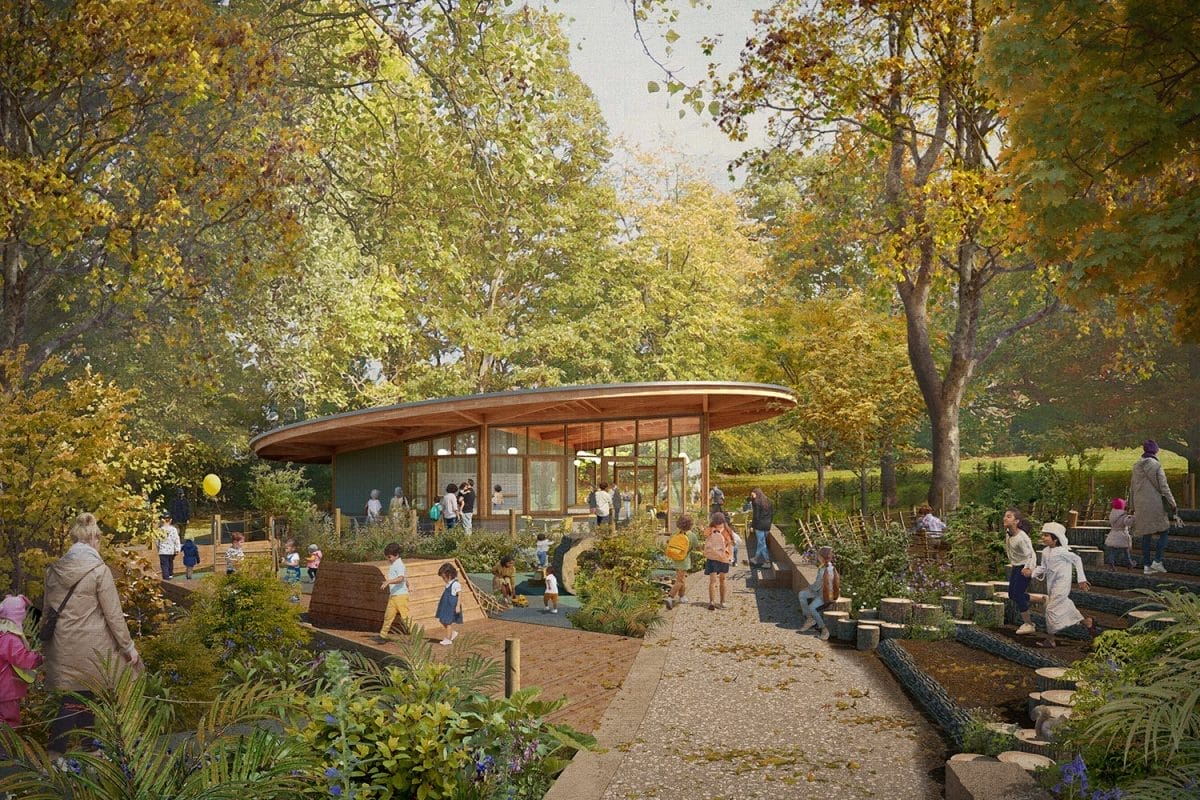1888 – 1898
The Horniman family moved to Surrey Mount in 1888 and opened the Surrey House Museum to the public in 1890, with the Horniman Gardens opening in 1895.
In 1891, Richard Quick became the first curator at the Horniman. Originally from Bristol, he studied at South Kensington School of Art followed by the Royal Academy of Art in Munich. He was a talented painter and good friend of Frederick Horniman, living on London Road himself between 1901 and 1904.
1898 – 1901
With limited space for Frederick Horniman’s growing collection, he purchased new land and closed the original Surrey House site in 1898.
With the development of new buildings, the Horniman underwent significant development, reopening to the public in 1901.
Frederick Horniman commissioned architect Charles Harrison Townsend to design a new museum to house his collections. The newly constructed building comprised of the Clocktower, Aquarium and the North and South Hall Gallery and was built for around £40,000.
Frederick stated that his collection hoped to ‘inform those who had not had the opportunity to visit distant lands’, and the larger gallery space allowed this.
1901 – 1933
In 1901 Frederick Horniman gave the Museum and Gardens to London County Council for the use of the public.
From the beginning of the 20th century, the Horniman really began to take shape through it’s exhibitions and displays.
The North Hall has always been dedicated to Natural History, and from 1901, this is where you could find the trademark collection of taxidermy, including the famous Walrus.
The South Hall, now referred to as the World Gallery, was originally built with a focus on archaeology and ethnography, a thread that continues in today’s World Gallery displays.
Frederick Horniman passed away in 1906.
In 1912, Emslie donated money to build a new library and lecture theatre.
The West Hall was also developed in 1933, displaying temporary exhibitions all the way up to the 1990s. This is the same space that is today occupied by the Music Gallery and Gallery Square.
1933 – 1965
In 1947, Otto Samson was appointed the new Director of the Horniman. He greatly expanded the Horniman collection strategy, including the establishment of a post in ethnomusicology and an active collection of musical instruments.
Samson settled in London in the 1930’s. As a Jewish man, he had fled his home country of Germany after the Nazi’s came to power in 1933.
The acquisition of masks was a central part of his collecting strategy. A Carnival Mask from Cyprus went on display in the Library space built by Emslie Horniman in 1959. This was presented by London councillor Irene Chaplin as well as Mr Phaedon G. Constantinides, the Cyprus Commissioner in London.
In 1965, the South Hall was modernised with a host of new objects enriching its ethnographic displays. The objects were presented at the ceremony by Otto Samson and with London councillor Irene Chaplin.
1965 – Now
The Horniman Conservatory was originally housed at the home of Frederick Horniman’s parents, in Cliffe Coombe in Croydon. In 1987 the Conservatory was moved and reconstructed at the Horniman before officially opening in October 1989.
Now, the Horniman is undergoing some exciting new developments as part of the Nature + Love project. Nature + Love is a transformational project to inspire a greater understanding and appreciation for the world we all share.
As part of these changes, there will be a new café at the bottom of the Meadow Field, new Nursey Gardens and workshop space, a new community garden, updates to the Nature Trail and the reopening of the Natural History Gallery in 2026.

Nature + Love is made possible with The National Lottery Heritage Fund. Thanks to National Lottery players, we have been able to begin work to make the Horniman more inclusive and accessible, placing environmental sustainability and a commitment to fighting the climate emergency at its heart.


